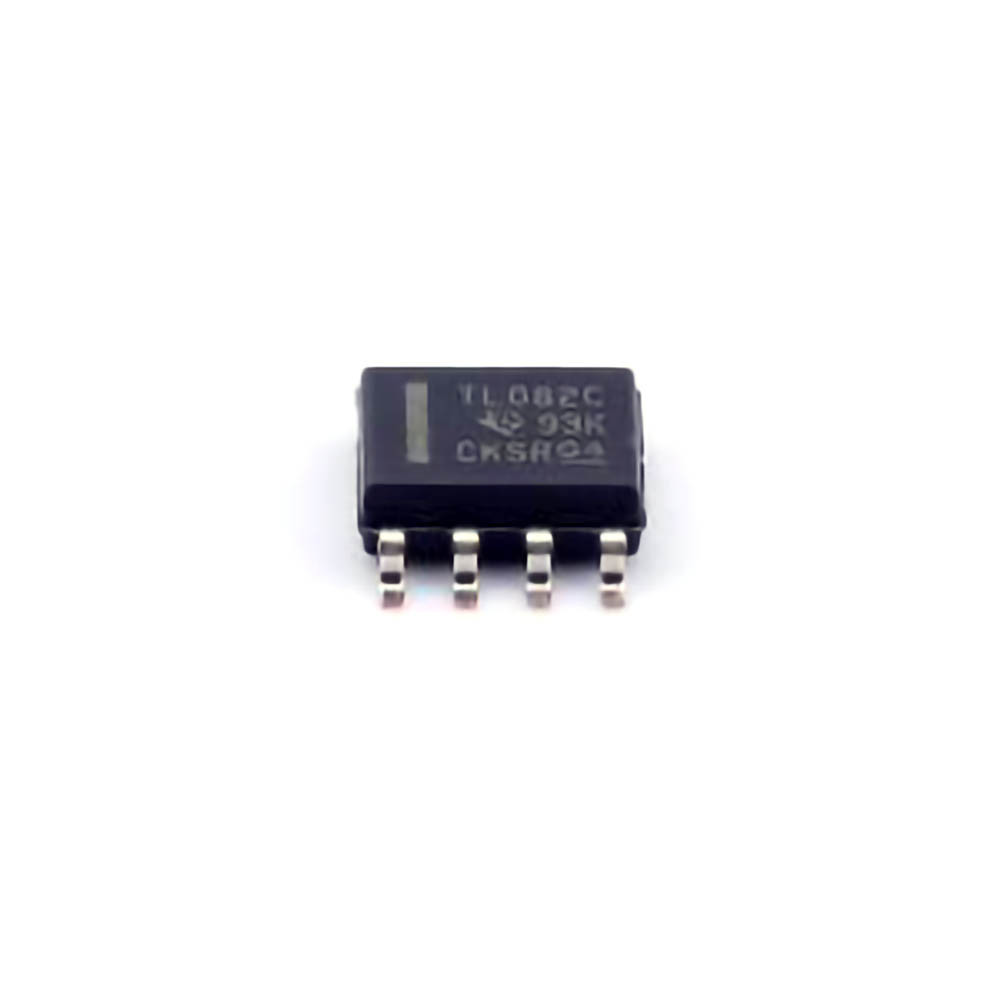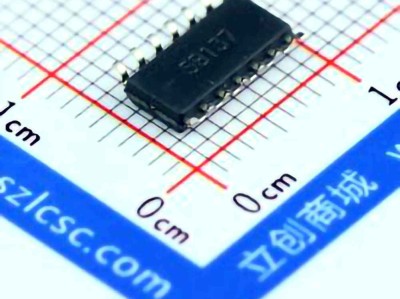
This article explores the common issue of offset voltage errors in the TL082CDR operational amplifier, delving into the causes, diagnosis, and effective solutions to mitigate these errors in your electronic circuits. Whether you are an experienced engineer or just starting, understanding these errors and how to resolve them will ensure the precision and reliability of your designs.
Understanding the Causes of Offset Voltage in TL082CDR
Operational amplifiers (op-amps) like the TL082CDR are widely used in various electronic applications, including signal amplification, filtering, and analog computation. However, like all complex electronic components, op-amps are susceptible to certain inherent issues that can affect their performance. One of the most common and critical challenges encountered is offset voltage errors.
What is Offset Voltage?
Offset voltage is the difference in voltage between the two input terminals of an op-amp when the output is ideally zero (i.e., when no differential signal is applied). This discrepancy can be caused by several factors within the op-amp itself, leading to inaccurate results and potential failures in high-precision applications.
In the case of the TL082CDR, a popular dual operational amplifier from Texas Instruments, the offset voltage typically ranges from 3 mV to 10 mV, but can vary depending on factors such as temperature, aging, and supply voltage. This might seem like a small error, but in sensitive electronic systems, even a tiny offset voltage can cause significant distortions, noise, or incorrect behavior, especially in high-gain applications.
Causes of Offset Voltage in TL082CDR
Internal Device Characteristics:
The TL082CDR, like many op-amps, is constructed using multiple transistor s and other internal components. Minor imbalances between these components, such as transistor mismatches or differences in manufacturing processes, can lead to an offset voltage. These internal characteristics are intrinsic to the device itself and are often specified in datasheets.
Temperature Variations:
Offset voltage is not a static parameter; it can vary with temperature. This is due to the temperature dependence of the transistor properties inside the op-amp. In the case of TL082CDR, the offset voltage increases with temperature, causing drift in performance. If the temperature range of the circuit exceeds the op-amp’s specified operating temperature range, this drift can become more pronounced.
Aging Effects:
Over time, the internal components of the op-amp undergo gradual wear and tear due to factors such as thermal cycling and voltage stress. This can lead to a slow change in the offset voltage, even in a device that initially exhibited low offset. For long-term applications, this aging effect can lead to a gradual degradation in performance, especially in circuits requiring high precision.
Power Supply Variations:
Variations in the power supply voltage can also influence the offset voltage of the TL082CDR. If the supply voltage is unstable or fluctuates significantly, it may exacerbate the offset voltage, leading to further inaccuracies in your circuit.
Input Bias Current and Impedance Mismatch:
The TL082CDR, like other op-amps, has an input bias current that flows through its input terminals. If the impedance at the input is not matched appropriately, this current can interact with the surrounding resistive elements in the circuit, causing additional offset voltage. This is particularly problematic in high-impedance applications, where the input bias current may result in significant errors.
Why Does Offset Voltage Matter?
The impact of offset voltage errors can be severe in circuits where small signals must be amplified with precision. Examples include sensor signal conditioning, audio pre-amplification, and precision measurement instruments. In these applications, even a small offset can distort the desired output, leading to a loss of accuracy or even system failure.
For instance, in a sensor circuit designed to measure minute changes in physical parameters like temperature or pressure, a constant offset voltage would skew the readings, causing incorrect data acquisition. Similarly, in audio equipment, where the goal is to amplify the sound without distortion, any offset voltage would result in unwanted noise or hum.
Diagnosis and Solutions to Offset Voltage Errors in TL082CDR
Now that we’ve established the causes of offset voltage errors in the TL082CDR, it’s important to explore how to diagnose and correct these issues effectively. The following methods and techniques will help ensure that your circuits using TL082CDR op-amps operate with the highest possible accuracy.
1. Measuring the Offset Voltage
The first step in diagnosing offset voltage errors is to measure the voltage difference between the op-amp’s two input terminals while ensuring that the output is ideally zero. This can be done using a high-impedance voltmeter or an oscilloscope. A basic procedure involves:
Applying no input signal to the op-amp.
Measuring the voltage between the non-inverting (+) and inverting (-) input terminals.
If there is a significant voltage difference (outside the specified offset voltage range in the datasheet), it indicates that the op-amp has a noticeable offset.
It is important to measure the offset voltage at various temperatures, as offset can change with temperature variations.
2. Offset Voltage Nulling Techniques
One common and effective method to compensate for offset voltage errors is offset voltage nulling. Many operational amplifiers, including the TL082CDR, have offset null pins that can be used to manually adjust the offset voltage. These pins are connected to a potentiometer, which, when adjusted, can reduce the offset voltage to an acceptable level.
Procedure for Nulling:
Connect a potentiometer between the offset null pins (pins 1 and 5 on the TL082CDR).
Adjust the potentiometer while monitoring the output or input voltage to achieve the desired offset correction.
While this method is effective, it can be tedious and is often impractical in automatic systems where constant adjustment is not feasible.
3. Using External Circuitry to Compensate for Offset
Another approach is to design external offset compensation circuitry. For instance, a trimming resistor can be added in the feedback loop of the op-amp to minimize the effects of offset voltage. This resistor compensates for the mismatch between the op-amp’s internal components and ensures that the output voltage is more accurate.
In more complex applications, chopper-stabilized op-amps or precision op-amps with built-in offset correction can be used instead of the TL082CDR. These devices are designed to automatically correct offset errors over time and temperature variations.
4. Improving Power Supply Stability
As mentioned earlier, variations in power supply can affect offset voltage. To mitigate this, it’s essential to stabilize the power supply to the op-amp. Using a low-noise voltage regulator and ensuring that the op-amp receives a clean, stable power supply can minimize fluctuations that cause offset drift.
5. Choosing Higher Precision Op-Amps
In applications requiring extreme accuracy, such as precision instrumentation or medical devices, it might be worth considering higher precision op-amps with lower offset voltage specifications. Devices like the OPA2277 or TLV2372 have much lower offset voltages, often in the microvolt range, making them more suitable for ultra-low offset applications.
6. Temperature Compensation
To mitigate the impact of temperature-related offset voltage drift, temperature compensation circuits can be employed. These circuits use temperature sensors to monitor the surrounding environment and adjust the offset voltage accordingly. For instance, a thermistor or RTD (resistance temperature detector) can be incorporated into the circuit to dynamically compensate for temperature changes.
Conclusion
In summary, offset voltage errors in TL082CDR operational amplifiers can pose significant challenges in high-precision electronic circuits. However, understanding the root causes of these errors and applying diagnostic and corrective measures such as offset nulling, external compensation circuits, and power supply stabilization can mitigate their impact. By taking a proactive approach to diagnosing and addressing offset voltage issues, engineers can ensure that their designs achieve the accuracy and reliability required for their specific applications.
Whether through manual adjustment or the use of more advanced techniques and components, the key to successful offset voltage management lies in selecting the right strategies for your design needs.
Partnering with an electronic components supplier sets your team up for success, ensuring the design, production, and procurement processes are quality and error-free.

